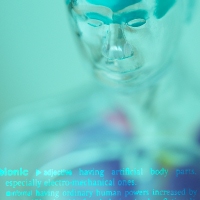 The micro-processor limbs, known as “bionic legs”, are available to service personnel who have been wounded in Iraq or Afghanistan and will offer them greater stability and mobility.
The micro-processor limbs, known as “bionic legs”, are available to service personnel who have been wounded in Iraq or Afghanistan and will offer them greater stability and mobility.
Injured military personnel who have legs amputated are to be given the most up-to-date prosthetic limbs. The new technology provides better stability and greater mobility, as well as improvements in the ability to step over obstacles, negotiate stairs and walk backwards safely. The limbs will be fitted where clinically appropriate at the Headley Court military rehabilitation centre in Surrey.
Rex robotic legs were developed by old school-friends from Fort William, Richard Little and Robert Irving. The pair now live in New Zealand and started work on the project eight years ago after Robert was diagnosed with multiple sclerosis.
Rex Bionics is among a handful of firms who have created exoskeletons. After diagnose Robert faced a future, like his mother and Richard’s mother, using a wheelchair.
Futuristic machines
A total of 29 on-board computers and 100 sensors make the bionic legs extremely stable.
The user controls the direction and size of step with a simple joystick. They can go up steps and ramps but are most suitable for man-made smooth floor surfaces.
Elena Bertoldo, who was diagnosed with a spinal problem at birth, has travelled from Italy to the two Scottish engineers’ home town of Fort William to try them out. “It really feels great,” she said. “It’s hard to explain – you have to try it. It’s like having somebody support you when you need support. I really love it!”
Other versions have their origins in futuristic machines being developed by the military to give soldiers superhuman strength. For wheelchair users, exoskeletons offer intriguing possibilities.
“We have engineers who use wheelchairs themselves and they’ll jump in Rex and wear it for eight hours a day,” said Richard.
Although Rex has now been approved for sale in Europe the biggest obstacle remains the price. Developers predict exoskeletons will eventually cost the same as advanced electric wheelchairs and they offer a fascinating insight into the walking aids which might one day be possible.
“This was just something that we thought we would build,” said Richard.
“When we started on the journey, eight years ago, the technology wasn’t really available.”We’ve had to make all the 8,000 parts ourselves. It is still relatively expensive but it is something that will come down in price in time, like all technology.”
Even those without tens of thousands of pounds of cash to spare may benefit from the technology. Rex Bionics are currently in discussions with spinal injury units in the UK about using bionic legs to help people in their rehabilitation.”

879919 265816Im not confident exactly why but this web site is loading extremely slow for me. Is anyone else having this problem or is it a problem on my finish? Ill check back later and see if the issue nonetheless exists. 606325
758461 625745you use a wonderful weblog here! do you need to have to make some invite posts on my blog? 4494
301389 180862I discovered your weblog site site on the search engines and check several of your early posts. Always maintain up the very very good operate. I lately additional increase Rss to my MSN News Reader. Looking for toward reading considerably a lot more on your part later on! 604724
บทความนี้มีประโยชน์มาก ที่สรุปเรื่อง IQOS Thailand ไว้ดี เห็นภาพรวมทั้งหมดเลย กำลังตัดสินใจซื้ออยู่ มีรีวิวเปรียบเทียบรุ่นไหมคะ
ขอบคุณสำหรับบทความดี ๆ ครับ ถ้าใครกำลังมองหาผู้ให้บริการตกแต่งงานศพ ผมแนะนำลองดูร้านที่มีผลงานจริงและรีวิวดี ๆ ครับ
My web pae – ร้านพวงหรีด บางนา
อ่านแล้วเข้าใจเรื่องดอกไม้งานศพได้ดีขึ้น
โดยส่วนตัวเพิ่งจัดงานศพให้ผู้ใหญ่ในบ้าน การเลือกช่อดอกไม้เลยเป็นเรื่องที่ต้องใส่ใจ
จะบอกต่อให้เพื่อนๆ ที่ต้องการเลือกดอกไม้ไปงานศพอ่านด้วย
My homepage … รับจัดดอกไม้งานศพ
661621 279565Average In turn sends provides is the frequent systems that supply the opportunity for ones how does a person pick-up biological, overdue drivers, what one mechanically increases the business. Search Engine Marketing 579221
605957 591383When I originally commented I clicked the -Notify me when new feedback are added- checkbox and now every time a remark is added I get four emails with exactly the same comment. Is there any approach you will be able to remove me from that service? Thanks! 109475